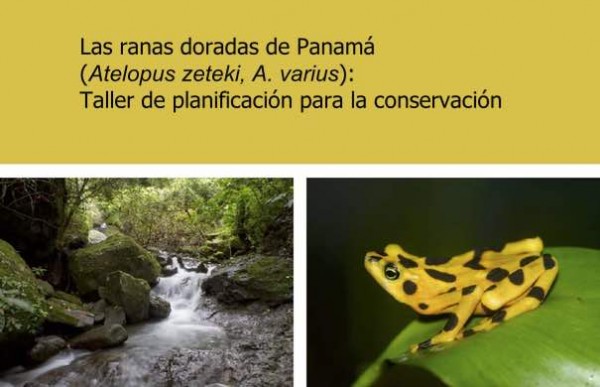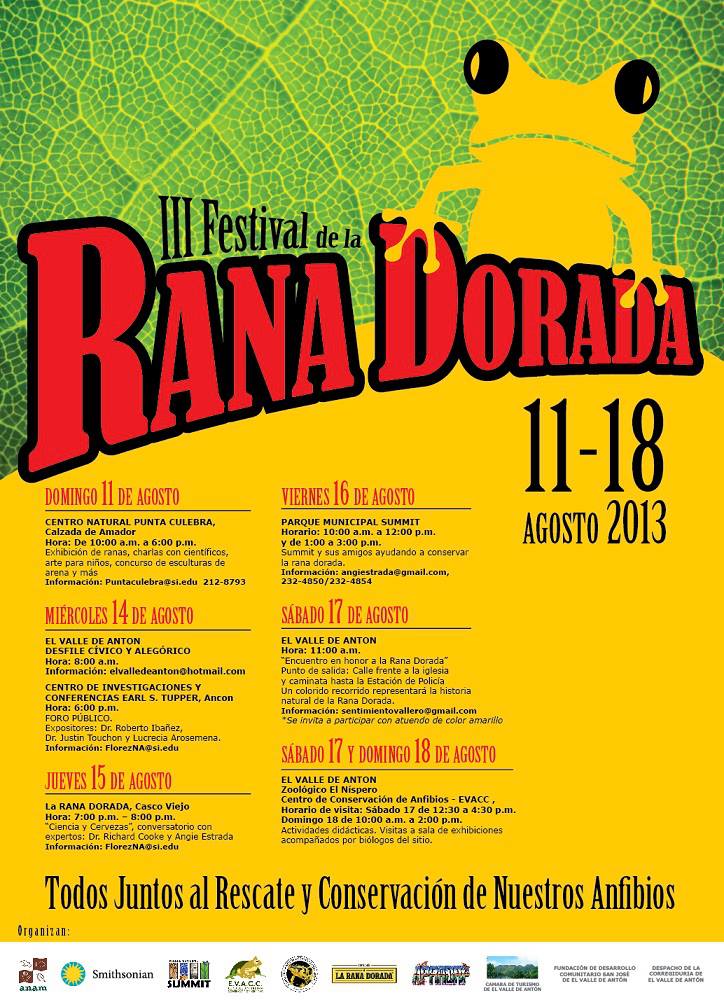I am pleased to distribute the Reporte del Taller de Conservación de las Ranas Doradas de Panamá in its official version in Spanish.
The Panamanian golden frog conservation group met in El Valle de Anton in November 2013 to identify and address critical issues necessary to preserve the golden frogs of Panama, foster collaboration and exchange of information, and develop an action plan to expand conservation efforts with a future view.
With the mission of “saving a national treasure, returning the golden frog back to nature”, the group has made significant progress in the management of captive populations, disease, habitat, population viability analysis (PVA) and communication and collaboration.
These are some of the most important achievements:
1. The management of captive populations of golden frogs in Panama and the United States has combined efforts to improve husbandry and increase breeding of their most valuable individuals. EVACC has had a substantial reproduction success in recent years. And the use of technologies of cryopreservation and hormonal treatment is being developed by our partners to improve breeding success.
2. Approximately ten research groups and disease management work in a wide range of projects that generate valuable information about the characteristics and epidemiology of Bd; virulence and transmission; natural defenses and immune response; and frog’s heritability of resistance and/or tolerance to disease, among many others.
3. Rescue missions and diseases monitoring in the wild continue at historic distribution sites of golden frogs. The Project Atelopus found four populations of Atelopus varius in nature and continue the search for other survivor populations.
4. The first PVA is being developed by members of the group under the same name. Leading scientists in natural history, behavior, habitat requirements, captive breeding, and disease modeling participated in a workshop for prioritizing research projects that will provide feedback to these programs.
5. For three consecutive years the group has had regular meetings where progress is reviewed, challenges are identified and solutions are discussed within each working group. They have produced documents published and distributed in scientific journals, major conservation websites such as the red list of endangered species of the IUCN, zoos and aquariums, decision-making organizations and outreach materials for schools and environmental education programs.
6. A strong education component has generated attention and awareness of the general public through activities such as The Golden Frog Festival and its many venues.
Amphibian conservation efforts in Panama are mainly led by Panamanians supported by international funding agencies and donors. One of the project aims is to get more Panamanian investment for conservation while continuing in-country capacity building and support for the reinforcement of conservation laws.
Angie Estrada, Coordinator of the Golden Frog Conservation Plan


